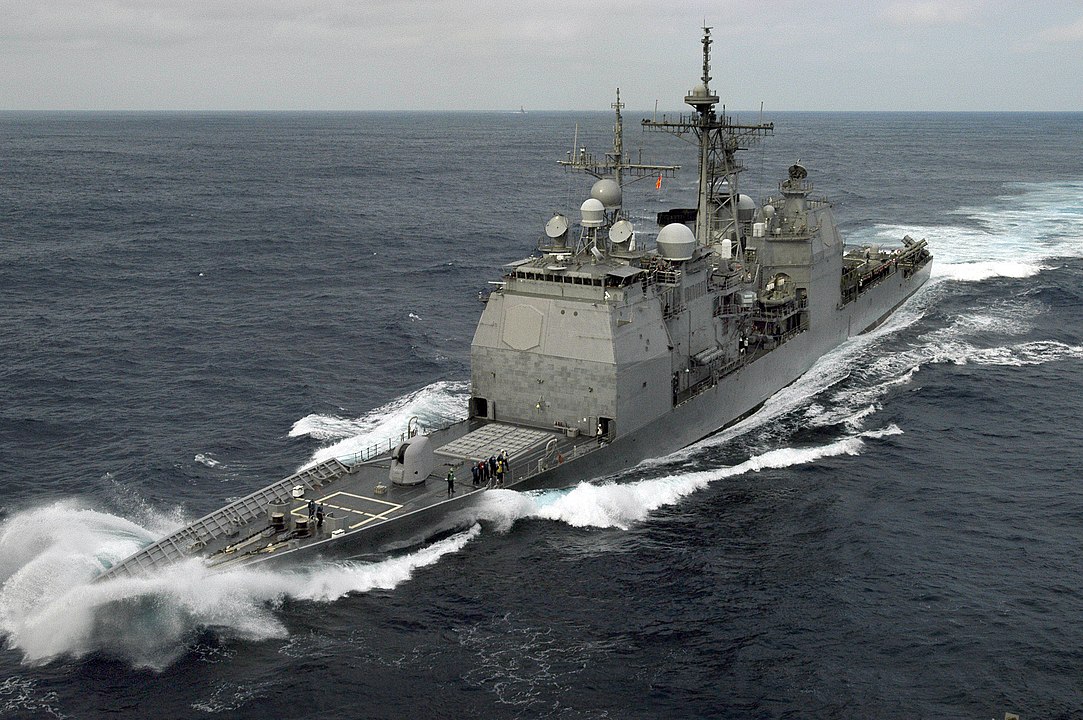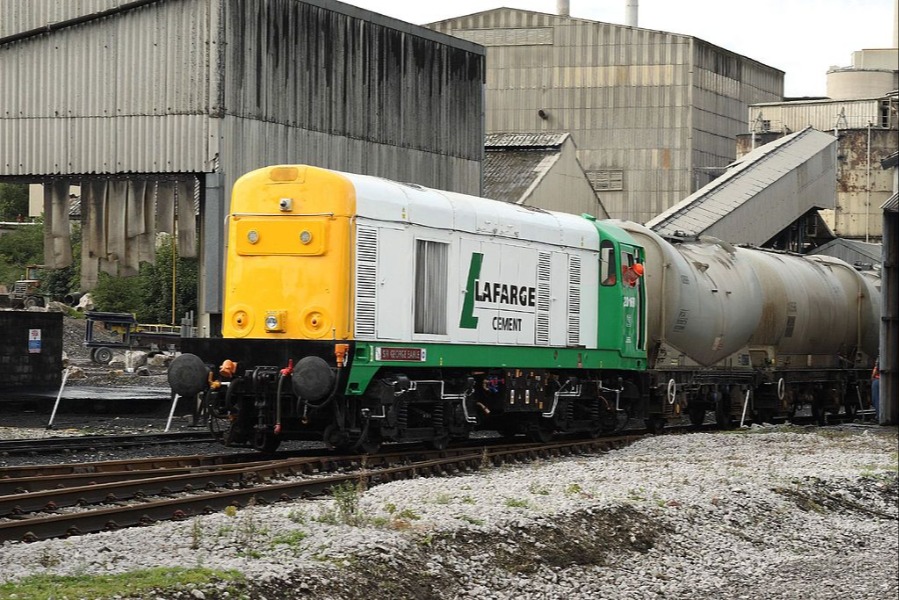Water Wars: U.S.-China Divide at Shangri-La
The Shangri-La Dialogue, the highest profile annual security forum in Asia, was held from May 31 to June 2 in Singapore. Singaporean Prime Minister Lee Hsien Loong delivered an opening speech that received widespread praise from Chinese netizens for its “objective analysis” of Sino-U.S. ties.

Published by The Lawfare Institute
in Cooperation With

The Shangri-La Dialogue, the highest profile annual security forum in Asia, was held from May 31 to June 2 in Singapore. Singaporean Prime Minister Lee Hsien Loong delivered an opening speech that received widespread praise from Chinese netizens for its “objective analysis” of Sino-U.S. ties. Lee called on both Beijing and Washington to avoid conflicts in the region and suggested the U.S. has “the most difficult adjustment to make” in terms of accepting that “China will continue to grow and strengthen.”
Speaking at the same forum, U.S. Acting Defense Secretary Patrick Shanahan made pointed references to China’s efforts at militarizing artificial features on disputed islands in the South China Sea. He denounced these efforts as a “toolkit of coercion” and said the U.S. would no longer “tiptoe” around Chinese behavior in the region.
Taking the stage a day after his U.S. counterpart, Chinese Minister of Defense Gen. Wei Fenghe said China built “limited defense facilities” in the face of “heavily armed warships and military aircraft,” presumably referring to those of the U.S. and its allies. He also stated the Chinese military will “resolutely take action” to defend claims over Taiwan and disputed South China Sea waters. General Wei is the highest-ranking Chinese official to attend the Shangri-La Dialogue in eight years.
Also speaking at the Shangri-La Dialogue, French Minister of the Armed Forces Florence Parly said France will continue to sail more than twice a year in the South China Sea. Vietnamese Minister of National Defense Ngo Xuan Lich urged countries to maintain cooperation and said China and Vietnam can “contribute a good model to solving conflicts.” He and Chinese Defense Minister Wei had met at the end of May in Hanoi to discuss South China Sea issues.
Speaking at an economic forum in Tokyo on May 31, Philippine President Rodrigo Duterte and Malaysian Prime Minister Mahathir Bin Mohamad appear to share the same concern over potential Sino-U.S. conflict in the region. Duterte veered off script and called for the conclusion of an agreement between the Association of Southeast Asian Nations (ASEAN) and China to govern conduct in the South China Sea. The lack of such a deal, he added, leaves an opening for outside powers to get involved. He criticized China for “claim[ing] the whole ocean” and the U.S. for “testing who can fire the first shot.”
Mahathir criticized the U.S. for “sending battleships into the area and carrying out exercises that may result in some strong confrontation.” He said such an approach could be the spark that leads to war.
In Other News
In the Indo-Pacific
On June 7, a Russian Udaloy-class destroyer (Admiral Vinogradov) and a U.S. guided-missile cruiser (USS Chancellorsville) nearly collided in the Philippine Sea. According to the U.S. Navy’s 7th Fleet, the Russian destroyer “made an unsafe maneuver” as it approached Chancellorsville from behind and came within 50-100 feet when the latter was “recovering its helicopter on a steady course and speed.”
The Russian Pacific Fleet press service disputed the sequence of events and said the American vessel had hindered the passage of the Admiral Vinogradov some 50 meters in front of it, forcing it to perform a dangerous maneuver to avoid collision. That the incident occurred in waters near China appears noteworthy, as Chinese President Xi Jinping had met his Russian counterpart Vladimir Putin two days prior on June 5.
On May 18, USS William P. Lawrence, a U.S. Navy Arleigh Burke-class guided-missile destroyer, joined the Japanese Maritime Self-Defense Force’s Izumo-class helicopter carrier JS Izumo and Murasame-class destroyer JS Murasame in the Malacca Strait for coordinated naval exercises. The U.S. Navy’s 7th Fleet noted that the vessels “participated in communication drills, working together to increase their efficiency and interoperability while at sea.”
On May 22, the U.S. Navy sent two of its ships, destroyer USS Preble and replenishment oiler USNS Walter S. Diehl, through the Taiwan Strait in its latest transit through the politically sensitive waterway. In response, Beijing lodged “stern representations” with the U.S., according to Chinese Foreign Ministry spokesman Lu Kang.
On May 29, Australian military officials confirmed that Australian navy pilots flying over the South China Sea were forced to make a precautionary landing after their helicopters were targeted by lasers. According to scholar Euan Graham, who was on board the Royal Australian Navy flagship HMAS Canberra at the time, the lasers had been pointed from passing fishing vessels while Canberra was being trailed by a Chinese warship.
On June 2, China began two days of military training in the South China Sea. According to the China Maritime Safety Administration, the drills occurred all day Sunday and for half a day on Tuesday in an area near Chinese-occupied islands in the Paracels.
On June 3, Chinese warships—a frigate, a replenishment ship and an amphibious transport dock—and with them around 700 sailors arrived in Sydney for a four-day port visit as they returned from the Middle East. Australian Prime Minister Scott Morrison confirmed this port call was arranged as a reciprocal visit.
Nonetheless, the visit caught academics and social media users by surprise. Rory Medcalf at Australian National University’s National Security College noted that previous visits by Chinese navy ships typically involved a single vessel and that Sydney was not a convenient stopover for vessels returning from the Gulf of Aden.
In Politics
On May 23, Republican Sen. Marco Rubio of Florida and Democratic Sen. Ben Cardin of Maryland reintroduced the South China Sea and East China Sea Sanctions Act that would “impose sanctions against Chinese individuals and entities that participate in Beijing’s illegitimate activities to aggressively assert its expansive maritime and territorial claims in these disputed regions.” Chinese Foreign Ministry spokesman Lu Kang noted China’s firm objection that the proposed legislation violates basic norms of international law and international relations.
On May 27, Taipei confirmed that its national security chief, David Lee, met U.S. national security adviser John Bolton during Lee’s visit to the U.S. during the week of May 13. This exchange was the first meeting between senior U.S. and Taiwan security officials in more than four decades. In response, China said it is “extremely dissatisfied and resolutely opposed to this.”
In Operations and Technology
On May 27, during President Trump’s visit, Japan confirmed its intention to purchase 105 F-35 stealth fighters. The deal was first announced in December 2018, when the Japanese cabinet granted approval to convert the Izumo-class destroyers, originally designed as helicopter carriers, into aircraft carriers capable of operating short take-off and vertical landing (STOVL) aircraft such as the F-35B.
In a symbolic gesture during the same visit, Trump became the first U.S. president to board the Kaga, an Izumo-class destroyer. Together with Japanese Prime Minister Shinzo Abe, he gave an address aboard the Kaga to a group of 500 personnel from the U.S. Navy and Japanese Maritime Self-Defense Force.
On May 31, the Pentagon announced it would sell 34 ScanEagle drones, made by Boeing, to the governments of Malaysia, Indonesia, the Philippines and Vietnam for a total of $47 million. The drones are expected to enhance intelligence-gathering capabilities. There is currently no armed version of the ScanEagle.
On June 2, photographs from Chinese social media appeared to show China conducting a missile launch in Bohai Bay near the Shandong Peninsula. Some online sources speculated it was a test firing of China’s next-generation submarine-launched ballistic missile (SLBM), the JL-3. Official Weibo accounts of the People’s Liberation Army (PLA) Rocket Force and PLA Navy (PLAN) posted cryptic messages about UFOs next to a picture of a missile launcher, without offering further explanation.
Analysis and Commentary
Mike Yeo documents how Japan’s regional influence is becoming the norm, much to China’s ire. He describes how the Japan Maritime Self-Defense Force regularly sends ships on cruises and port visits, conducts bilateral and multilateral exercises, and bolsters capabilities of weaker allies and partners in the region. Collin Koh, a maritime security research fellow at the S. Rajaratnam School of International Studies at Singapore’s Nanyang Technological University, notes that these moves are part of Japan’s “Free and Open Indo-Pacific Strategy” to counterbalance China.
Chen Xiangmiao, a research fellow at the National Institute for South China Sea Studies in Haikou, China, writes in the Diplomat that “the fundamental conflict in the SCS lies in the inconsistent American pursuit to dominate regional order and the growing strength of China.” He predicts that U.S. efforts at balancing against China, coupled with China’s moves at strengthening its frontline defense deployment, will keep the South China Sea in a state of “cold confrontation.”




